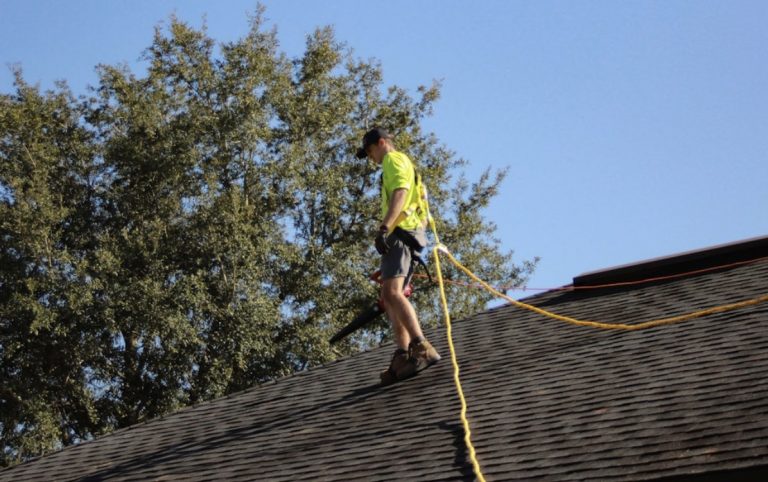Your roof plays a critical role in protecting your home from the elements, insulating it from extreme temperatures, and maintaining structural integrity. Despite its importance, many homeowners don’t think about their roofs until a leak or visible damage forces immediate action. However, waiting for a major problem can lead to higher repair costs, water damage, and even mold growth.
Being proactive and knowing when to call a professional roofer can save you time, money, and stress. Many roofing issues start subtly, making it easy to overlook the warning signs. Understanding the early indicators of roof trouble can help you address minor problems before they escalate into costly repairs—or worse, a full roof replacement.
Here are the key signs that it’s time to bring in a professional roofing expert.
When You Notice Water Stains or Leaks Inside Your Home
One of the most common and obvious signs that something is wrong with your roof is the appearance of water stains on your ceilings or walls. These discolorations are typically yellowish or brown and signal that water is making its way through the roof’s layers and into your home.
Even if you don’t see active dripping, stains indicate moisture infiltration and should be addressed immediately. Left unchecked, the water can compromise insulation, weaken drywall, and eventually lead to mold growth. Any interior signs of moisture should prompt a call to a roofing specialist to assess the damage and locate the source of the leak.
Shingles Are Missing, Cracked, or Curling
Shingles are your roof’s first line of defense, and their condition plays a major role in keeping your home watertight. If you notice shingles that are missing, cracked, curling at the edges, or buckling, it’s a sign that the roof is aging or has been damaged by weather.
Compromised shingles leave the underlying layers exposed to moisture and UV rays, accelerating deterioration. After a heavy storm, take a walk around your property to visually inspect the roof from the ground. If you notice areas that look uneven or spot granules in your gutters, it’s time to call in a professional for further inspection and repair.
You Don’t Know Your Roof’s Age or Maintenance History
Many homeowners inherit a roof when buying a house and don’t always receive detailed information about its age or upkeep. If your roof is more than 15–20 years old and has not been inspected recently, it’s wise to schedule a professional evaluation.
Even if there are no visible signs of damage, age alone can affect performance. Following what Wholesale Roofers recommends, such as routine inspections and seasonal upkeep, can help extend the life of your roof and avoid unexpected repair bills. An experienced roofer can check for wear and tear, recommend preventative maintenance, and advise you on the roof’s remaining lifespan.
Flashing Appears Damaged or Detached
Flashing is the metal material installed around roof features such as chimneys, vents, skylights, and valleys to prevent water from seeping into your home. Over time, flashing can corrode, become loose, or crack—especially if it was improperly installed or subjected to extreme weather.
Damaged flashing may not be immediately visible to the untrained eye, but it’s often the culprit behind slow, undetected leaks that cause long-term interior damage. If you suspect issues around your roof’s penetrations or have experienced leaks near these areas, it’s best to have a professional roofer evaluate the flashing.
The Roof Is Sagging or Warped
A sagging roof is never a good sign. It usually indicates a structural issue, whether from water damage, poor installation, or compromised support beams. A sagging roofline may be visible from the street or noticeable inside as uneven ceilings or creaking in the attic.
Roof sagging is considered an urgent issue because it can worsen quickly and pose a safety hazard. If your roof looks uneven or feels soft when walked on, don’t delay contacting a professional roofer for an immediate assessment.
There Are Signs of Mold, Moss, or Algae Growth
While a little moss might seem harmless, it often signals trapped moisture on your roof. Moss, mold, and algae thrive in damp conditions and can lead to significant damage over time. These organisms can eat away at roofing materials, increase the risk of leaks, and cause shingles to lift or crack.
Moss-covered roofs are particularly vulnerable in shaded or humid environments. Cleaning the growth off may provide a temporary fix, but you’ll need a roofer to identify and resolve the underlying moisture problem to prevent recurrence. Preventive treatment is also necessary to stop further damage.
Ignoring the signs of roof damage can lead to bigger problems that affect your entire home. Knowing when to call a professional isn’t just about fixing what’s broken—it’s about preserving your property, protecting your investment, and preventing avoidable costs. If you’ve noticed any of the issues above, don’t wait until the next storm or leak to take action. A qualified roofer can offer peace of mind and help you keep your home safe, dry, and structurally sound for years to come.



0 Comments